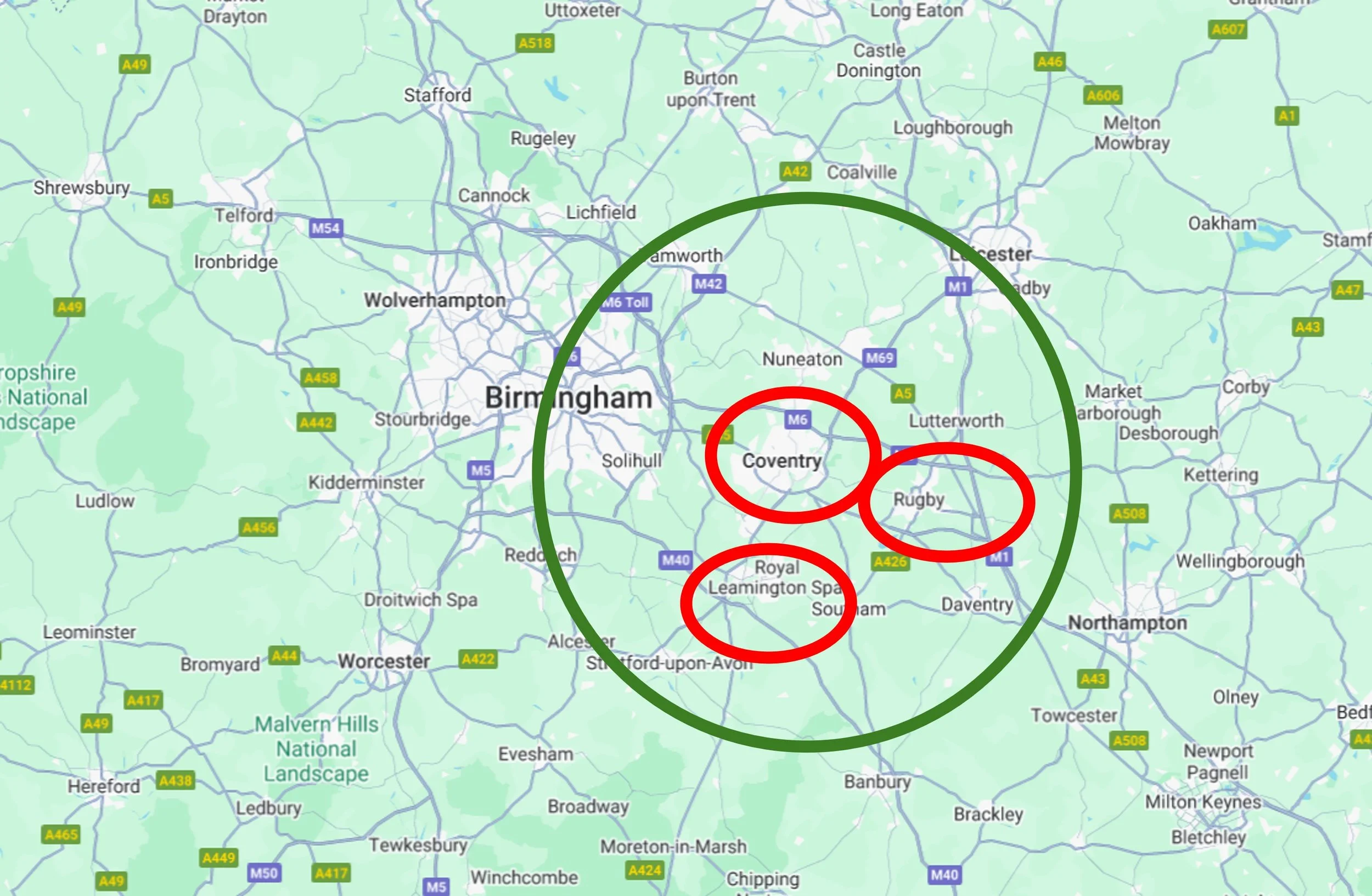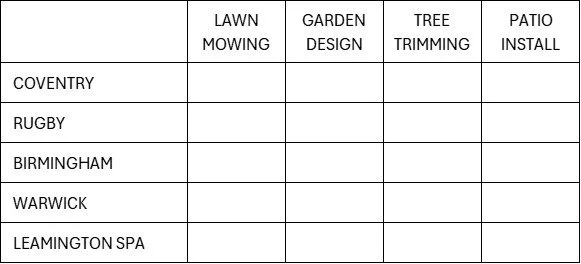The Biggest Local SEO Challenge – And How to Fix It
Getting your business to rank in local map searches can be straightforward—until you try to reach customers outside your immediate area.
For example, a Landscape Gardening company based in Coventry might want clients in Birmingham, Warwick, and Rugby, but their ability to rank drops significantly the further out the searcher is.
Why? Because proximity to the searcher is the #1 ranking factor—even for service-based businesses that travel to clients.
So, what does this mean for say a plumber covering a 30-mile radius or a web designer working remotely? Simply put, they may struggle to be found by someone searching even five miles away.
There is a way around this.
Your New Local SEO Strategy
Step 1: List Your Services
Start by writing down every service you offer. This forms the foundation of your SEO strategy.
Example for a Landscape Gardening Company:
Lawn mowing
Garden design
Tree trimming
Patio installation
Step 2: Identify Target Locations
List the towns and areas where you’d like to rank. Focus on places within a reasonable service radius.
Step 3: Map Out Service + Location Pages
Create a table combining each service with each location. Every combination represents a new webpage you’ll need to create.
Step 4: Prioritize by Search Volume
Use keyword research tools like SEMrush, Keywords Everywhere, or Google Keyword Planner to find the highest-volume searches. Focus on the most impactful combinations first.
Step 5: Create Service Location Pages
For each service-location combination, create a dedicated page using your homepage as a template.
Example Pages:
“Warwickshire Landscaping Services”
“Birmingham Landscaping Experts”
“Rugby Lawn Mowing Pros”
Action Items:
Include the service + location in the title and H1 heading.
Use the phrase naturally throughout the page.
Link these pages internally on your website (e.g., in your footer or within relevant content).
Step 6: Customize Content for Each Page
Google values unique, high-quality content. Use ChatGPT to:
Rewrite and tailor each page.
Include the main keyword in headings and throughout the body.
Add variations of the phrase (e.g., “Grass Cutting in Birmingham” or “Lawn Mowing in Warwick”).
Example ChatGPT Prompt:
“Rewrite this webpage content for a landing page targeting ‘[Service] in [Location].’ Include the phrase in the H1, subheadings, and body, plus related keywords and local references.”
Step 7: Optimize Your Google Business Profile (GBP)
Add each service/location combination to your GBP as a separate service listing.
Link each listing to the corresponding landing page.
Update your GBP service areas to reflect your target locations.
Step 8: Build Citations & Backlinks
Citations (mentions of your business on directories) help boost local rankings. Start by submitting your business to:
To find more, search: “[Competitor’s Business Name] AND [Competitor’s Postcode] –site:competitorswebsite.co.uk” to discover where competitors are listed.
Find and list in Niche Directories for Your Industry:
Find and list in Local Directories for Your Location:
Step 9: Get Backlinks to Your Location Pages
Backlinks from reputable sites help your pages rank. Try:
Writing guest blog posts with links to your location pages.
Creating shareable infographics with embedded links.
Publishing valuable guides or case studies related to your services.
Final Thoughts
Ranking outside your immediate location takes effort, but this strategy works. By systematically creating service-location pages, optimising your GBP, and building citations and backlinks, you can significantly improve your local search presence and attract more customers from surrounding areas.
Need help implementing this? Let’s chat!
If you found my content helpful
you can support my blog with a donation at BuyMeACoffee



